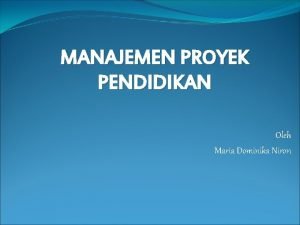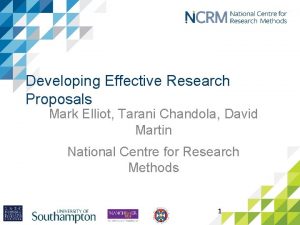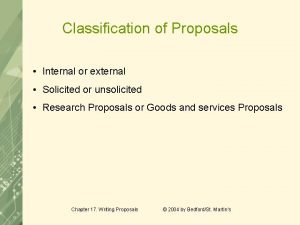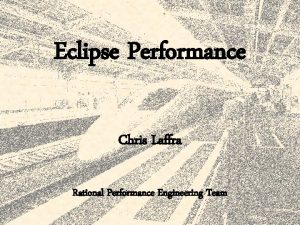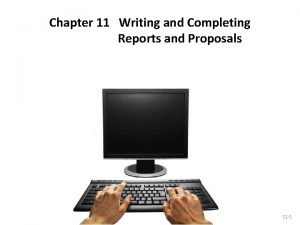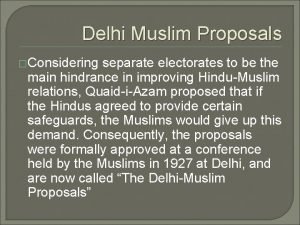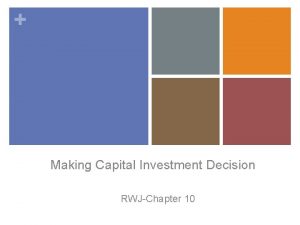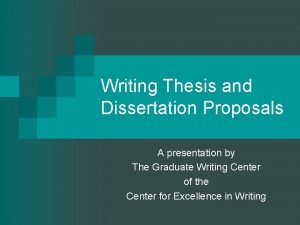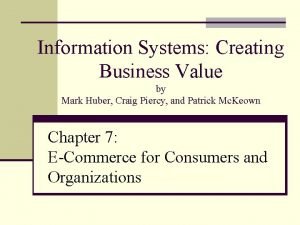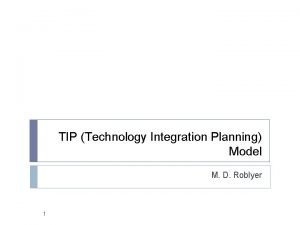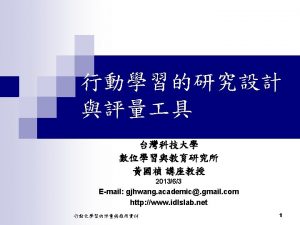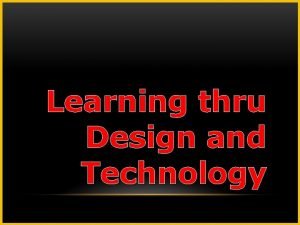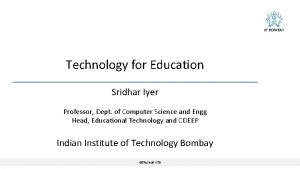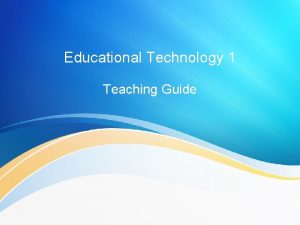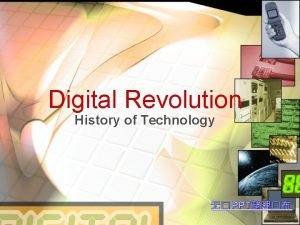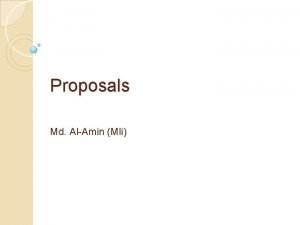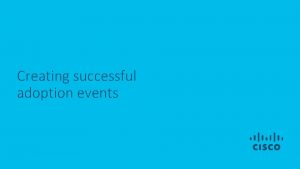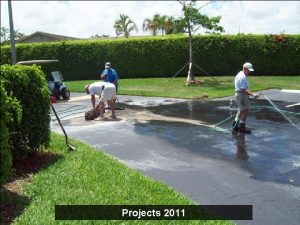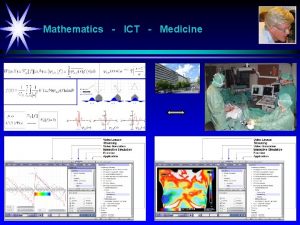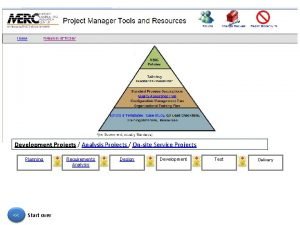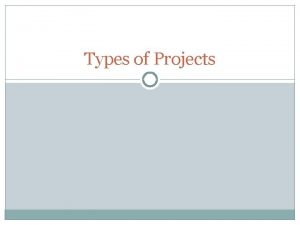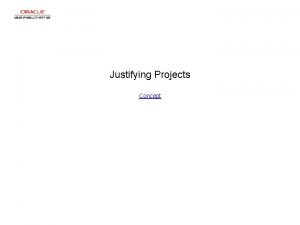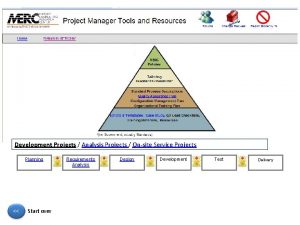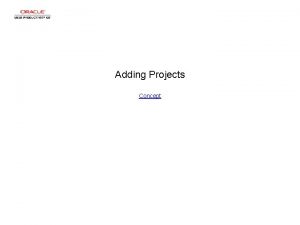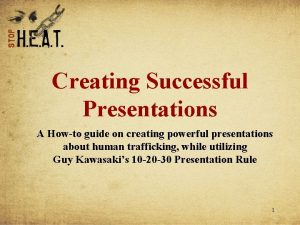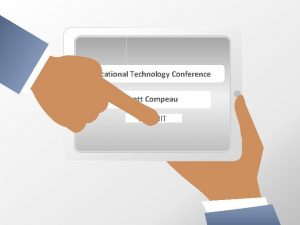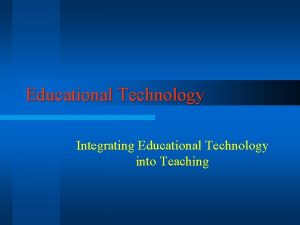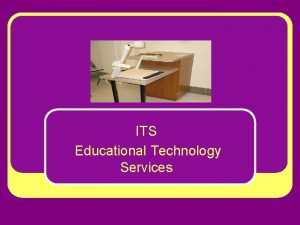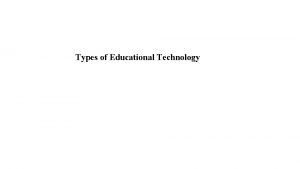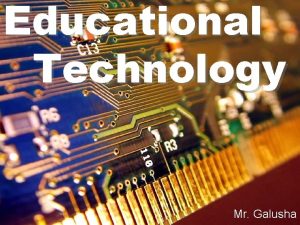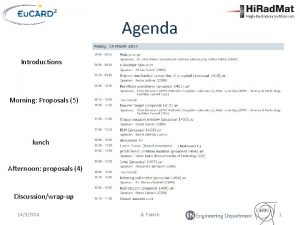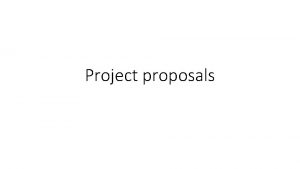Creating Successful Proposals for Educational Technology Projects Educational





















- Slides: 21

Creating Successful Proposals for Educational Technology Projects Educational Technology Integration

z. Heather Hurley z. Jeff Sun ywww. sun-associates. com yhhurley@sun-associates. com y 978 -453 -3070

Goals for this Session z. What does it take to create a successful educational technology grant proposal? z. What are some general rules for grant and proposal writing? z. Where can one find proposal-writing resources and funding information? z. Others?

Key Items for a Successful Grant Proposal z A technology plan with clear curriculum-based goals and objectives is the #1 key to a successful funding request. z The plan ties your funding request into the big picture of what technology means in your school or district. z. What do you know about your school’s educational technology plan? ?

Technology Grants z. There are no easy answers to finding funds for technology. . . y. The majority funding is for curriculum and staff development y. Most funders expect you to have your infrastructure in place y“Computers” are routine whereas good use of that hardware is innovative y. Funders support innovation

What is Innovative? z. Curriculum mappings z. Staff development models z. Innovative technologies z. Combinations of all of the above

Hallmarks of a Well-Written Technology Proposal z Clear and documented links to a strategic technology plan z Clearly defined teaching and learning goals which build upon proven practice z The project involves more than one teacher and/or classroom (although focus on one is fine) z The project has matching funds and support from other sources z A strong evaluation component

Bottom Line? z. Over the long run, the best source for funding is the local initiative y. Your community must come to believe in the value of technology tools y. No amount of grant funds will continually and constantly support the use and integration of technology tools

Tips for Proposal-Writers z 10 Tips for Proposal-Writers ywww. sun-associates. com/resources/10 tips. html z. Read the Request for Proposals!! y. It’s surprising how many people miss this basic point y. The RFP should serve as your proposal’s blueprint and virtually the table of contents y. Organize the proposal in the same order as the sections of the RFP

z. Follow the rules, regulations, and/or guidelines y. Adhere to page limits, budget limitations, IRS rules, deadlines, etc. . z. Be concise, but don’t leave out important points y. Obviously, this is the key to “good writing”

Working a Sample Proposal z. In groups, read the sample RFP z. Discuss and outline y. What are they asking for? y. What are the criteria for funding? z. Read the sample proposals z. Discuss and Score

Report Out z. What are the proposal’s strong points? z. What are the proposal’s weak points? z. Should this be funded? y. Why or why not z. Frame your responses along the line of the review questions and the RFP

Things to Think About. . . z. Involve other people in your search for funders and in the proposal-writing process z. Don’t overlook local funding sources z. Think broadly! Do not limit yourself to seeking a particular type of grant or to a particular funding source z. Ground your proposal in relevant literature

Does Your Proposal Answer These Questions? z How will this project positively impact student learning? z How will the funds we are requesting create a ultimately self-sustaining project? z How does this request fit into our local educational technology plan? z How does this proposal address particular funding priorities? ye. g. . , areas of poverty, empowerment zones, gender equity, etc.

Common Proposal Mistakes z Proposals not written to the guidelines ytoo long, requests for non-allowed expenses, etc. z Proposals that attempt to do too much y. No singular grant will cover all your technology needs. z Proposals that are written by only one person y. A good proposal needs the ideas and contributions of several people. Proposal writing is a collaborative effort!

z. Proposals that do not directly address student outcomes y. Funders want to fund technology for children, not teachers (as hard as this may be to understand. . . ) y. Funders want to know that their funds have had some impact. y. How will your project demonstrate this impact?

Evaluation z. All proposals should have an evaluation component…even if the RFP does not mandate one! z. Formative vs. Summative z. Allocating sufficient resources for evaluation

Developing evaluation questions z. Evaluation questions must tie back to project goals and objectives z. Ideally, your actual proposal will define… y. Evaluation questions y. Data collection and analysis methodologies z. Stonger proposals will detail this information even if an outside evaluator will conduct the actual evaluation

Internet Resources for Funding Information z www. ed. gov/funding. html y. The US Department of Education’s on-line grant information resource z fdncenter. org y. The Foundation Center. An excellent source for information on foundation and private grants z www. eschoolnews. com/funding/ ye. School News is an electronic newsletter with information on a wide variety of funding opportunities

and a few more. . . zwww. sun-associates. com/grantwriting. html y. Tips for proposal-writers, example proposals, etc. zwww. learner. org/sami/pages/fund-l. php 3 zwww. nsf. gov/home/grants. htm zmyweb. magicnet. net/~gwest/grant. htm

For more information. . . z. Heather Hurley ywww. sun-associates. com yhhurley@sun-associates. com y 978 -453 -3070
 Manajemen proyek pendidikan adalah
Manajemen proyek pendidikan adalah Developing effective research proposals
Developing effective research proposals Writing and completing reports and proposals
Writing and completing reports and proposals Classification of proposal
Classification of proposal Eclipse computing proposals slow
Eclipse computing proposals slow Writing and completing reports and proposals
Writing and completing reports and proposals Insurance proposals fire insurance
Insurance proposals fire insurance Delhi muslim proposals
Delhi muslim proposals A business proposal chapter 10
A business proposal chapter 10 When evaluating cost-cutting proposals
When evaluating cost-cutting proposals Writing thesis and dissertation proposals
Writing thesis and dissertation proposals Artificial intelligence thesis proposals
Artificial intelligence thesis proposals Creating business value through information technology
Creating business value through information technology Tip model
Tip model Technology came from the two greek word, *
Technology came from the two greek word, * Educational technology interoperability
Educational technology interoperability Educational technology & society
Educational technology & society Principles of educational technology
Principles of educational technology Educational technology iit bombay
Educational technology iit bombay Educational technology definition
Educational technology definition Historical development of educational technology ppt
Historical development of educational technology ppt Ledarskapsteorier
Ledarskapsteorier
